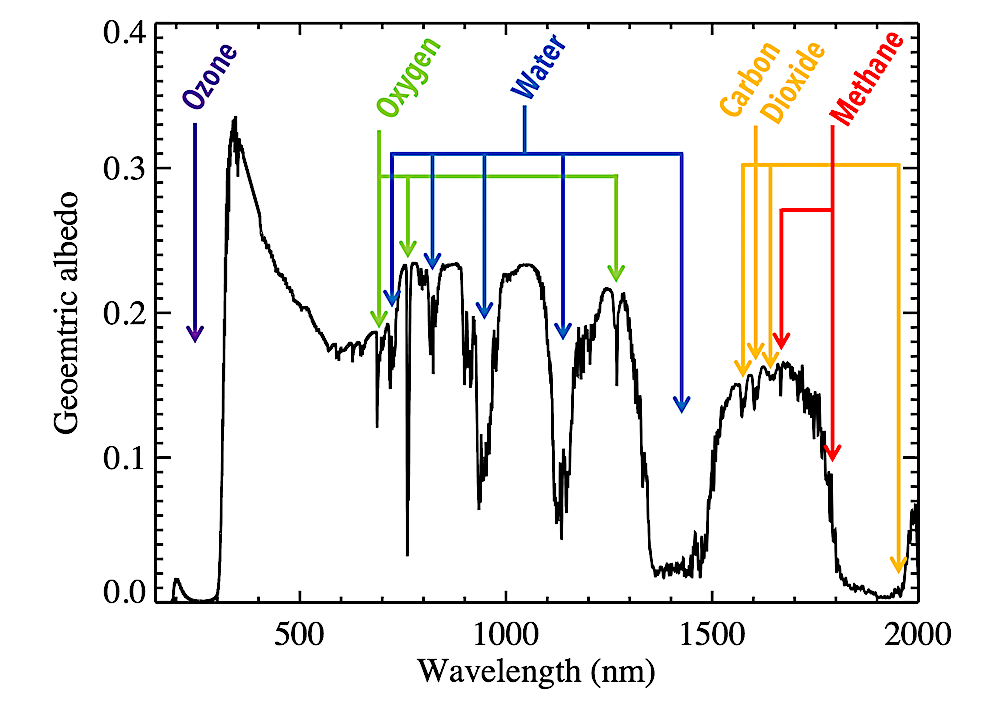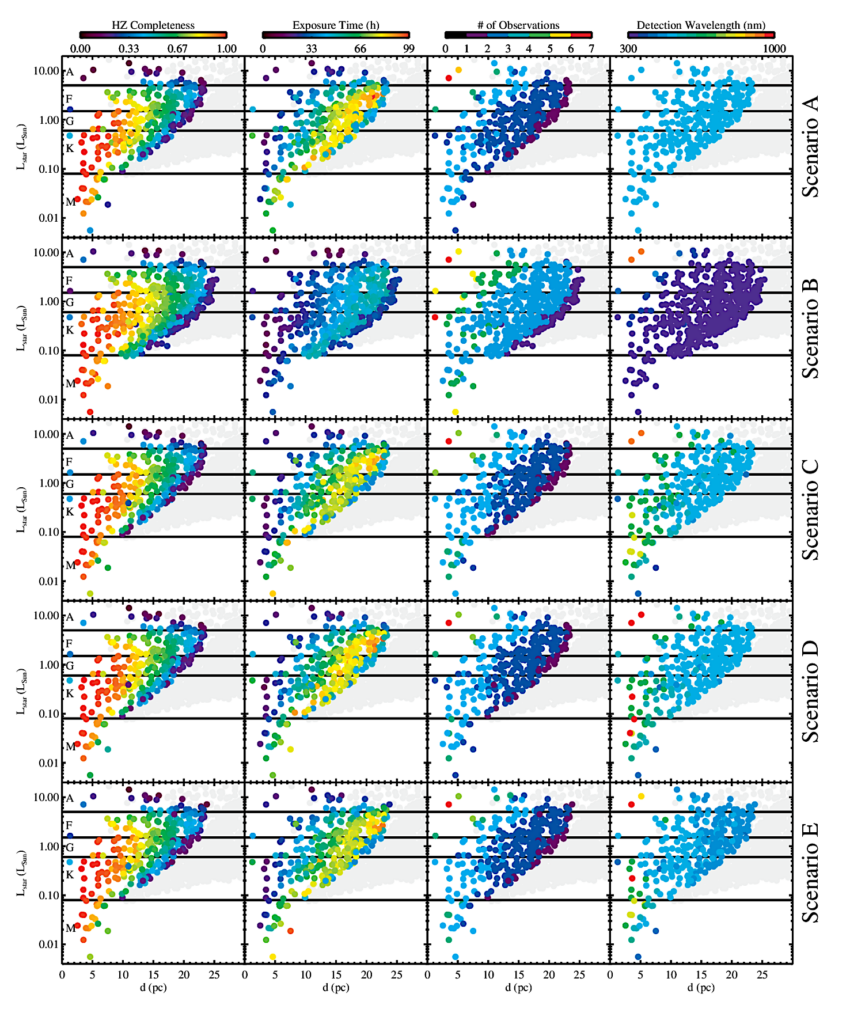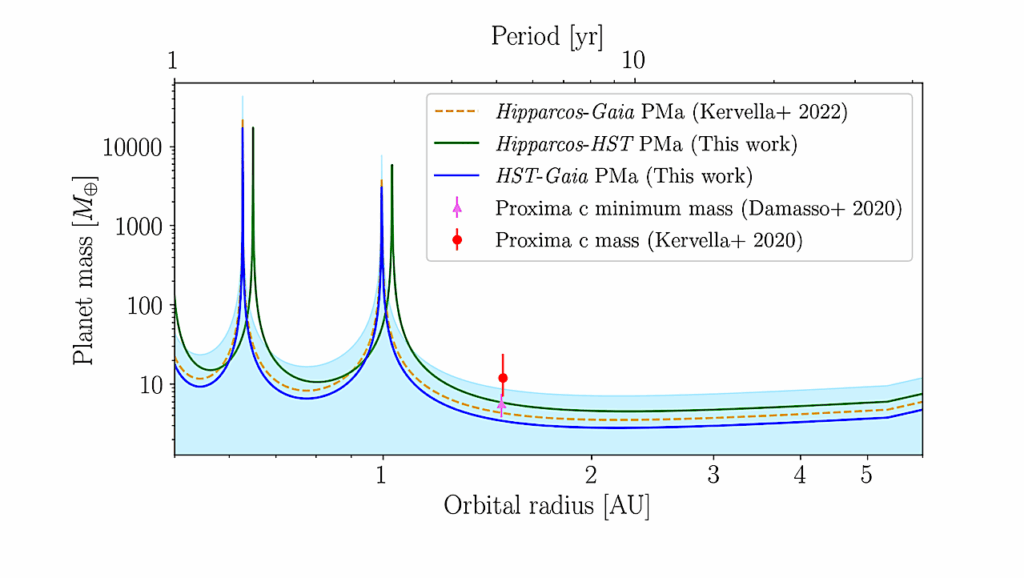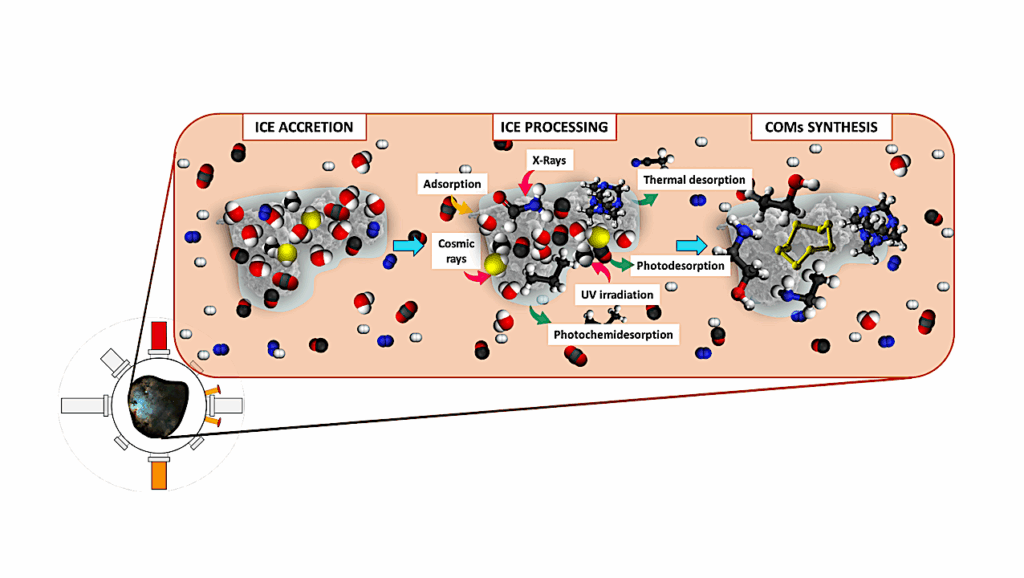Optimized Bandpasses For The Habitable Worlds Observatory’s ExoEarth Survey

A primary scientific goal of the future Habitable Worlds Observatory will be the direct detection and characterization of Earth-like planets. Estimates of the exoplanet yields for this concept will help guide mission design through detailed trade studies.
It is therefore critical that yield estimation codes optimally adapt observations to the mission’s performance parameters to ensure accurate trade studies. To aid in this, we implement wavelength optimization in yield calculations for the first time, allowing the yield code to determine the ideal detection and characterization bandpasses.

The geometric albedo of the Earth with major spectral features labeled. — astro-ph.EP
We use this new capability to confirm the observational wavelength assumptions made for the LUVOIR-B study, namely that the optimum detection wavelength is 500 nm for the majority of targets and the optimum wavelength to detect water is near 1000 nm, given LUVOIR-B’s assumed instrument performance parameters.
We show that including the wavelength dependent albedo of an Earth twin as a prior provides no significant benefit to the yields of exoEarth candidates and caution against tuning observations to modern Earth twins. We also show that coronagraphs whose inner working angles are similar to step functions may benefit from wavelength optimization and demonstrate how wavelength-dependent instrument performance can impact the optimum wavelengths for detection and characterization.
The optimization methods we implement automate wavelength selection and remove uncertainties regarding these choices, helping to adapt the observations to the instrument’s performance parameters.

Targets selected by our yield code for each of the detection wavelength optimization scenarios considered. From left to right, plots show habitable zone detection completeness, total detection exposure time, number of observations, and detection wavelength chosen for each target. Scenario D is our preferred detection wavelength optimization method; distant targets are preferentially observed in V band while nearby targets are observed at slightly longer wavelengths. — astro-ph.EP
Christopher C. Stark, Natasha Latouf, Avi M. Mandell, Amber Young
Comments: Accepted for publication in JATIS 26 pages, 14 figures, 1 table
Subjects: Earth and Planetary Astrophysics (astro-ph.EP); Instrumentation and Methods for Astrophysics (astro-ph.IM); Solar and Stellar Astrophysics (astro-ph.SR)
Cite as: arXiv:2404.05654 [astro-ph.EP] (or arXiv:2404.05654v1 [astro-ph.EP] for this version)
https://doi.org/10.48550/arXiv.2404.05654
Focus to learn more
Related DOI:
https://doi.org/10.1117/1.JATIS.10.1.014005
Focus to learn more
Submission history
From: Christopher Stark
[v1] Mon, 8 Apr 2024 16:38:16 UTC (3,718 KB)
https://arxiv.org/abs/2404.05654
Astrobiology,








